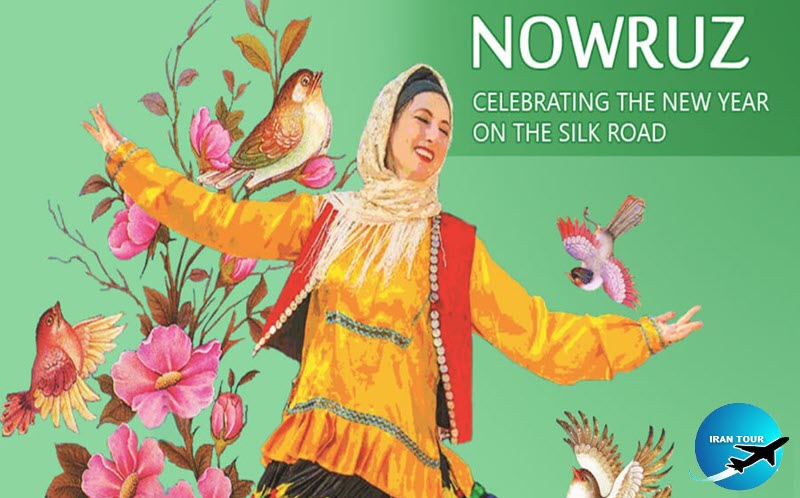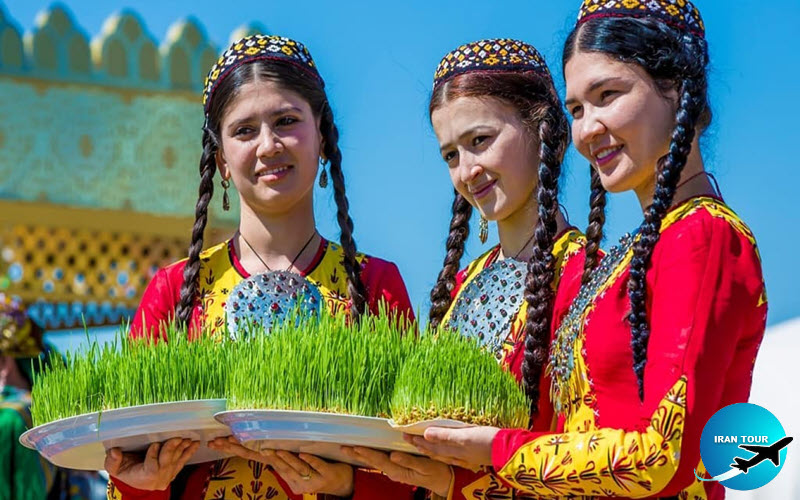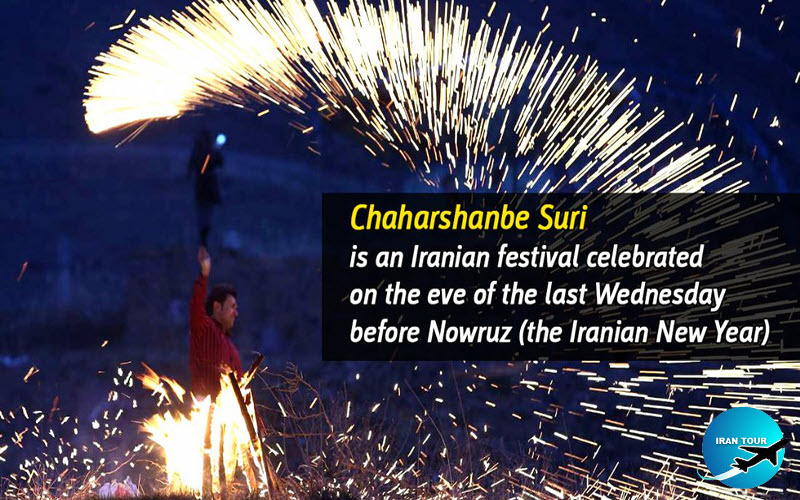Copyright 2020 - 2021 irantour.tours all right reserved
Designed by Behsazanhost
Nowruz is the oldest mythological celebration in Iran and the world
Nowruz is the oldest mythological celebration in Iran and the world
Nowruz is the oldest celebration in Iran, which has deep roots in the ancient history of Iran and is celebrated by more than 300 million people around the world on March 21. It is the day of the vernal equinox, which marks the passage of the sun over the equator and the beginning of spring in the northern hemisphere. Nowruz is one of the oldest and most beloved festivities celebrated for at least 3,000 years. Nowruz is a messenger of peace, friendship, benevolence for humanity, and admiration for nature not only for Iranians but for several nations and tribes that adorn and celebrate this ancient holiday. Nowruz is an opportunity to rethink, reboot, and redo. Nowruz is the spiritual heritage of mankind and Iranians will be delighted if the nations of the world enjoy this heritage and benefit from it. Nowruz is Iranians' message of peace and friendship to the whole world.
 |
The great symbol of Iranian endurance and culture in search of peace:
Nowruz is a strong testimony to the richness of Iranian civilization, national characteristics, and history. It proves how a nation with its irreversible determination to endure, and even thrive, through times of devastation, political chaos, hardship, and oppression. For centuries the Persians applied the Nowruz spirit to every dark challenge that came their way. This spirit has made Nowruz much more than just a New Year celebration throughout history. Throughout their often stormy history, the Persians have endured difficult times of civil wars, devastation, and political chaos. They celebrated the pinnacle of human civilization and scientific and military achievement through the spirit of Nowruz. The festival was so glorious and sacred that even the most ruthless rulers used to grant general amnesty to captives and prisoners. Nowruz's dignity is captured as Ahura Mazda in his splendid glory says, "On the day of Farvardin, even the hellish inhabitants return to this world to visit their families."
When does it begin?
In harmony with the rebirth of nature, the Persian New Year Celebration, or Nowruz, always begins on the first day of spring, March 21st of each year. Nowruz ceremonies are symbolic representations of two ancient concepts - the End and Rebirth. Nowruz (Norouz) in Persian means "New day". It is the beginning of the year for the peoples of Iran (Greater Iran, including Afghanistan, Arran (Republic of Azerbaijan), and Central Asian Republics).
It begins precisely with the beginning of spring on the vernal equinox, on or about March 21. Tradition takes Nowruz as far back as 15,000 years--before the last Ice age. It is not exactly known when and how the festival of Nowruzemerged. Some historians believe that natural changes in the weather gave rise to the festivities. Some consider it a national festival, while others regard it as a religious ritual. According to Zoroastrians, the month of Farvardin (the first month of the Iranian solar calendar) refers to Faravashis, or spirits, which return to the material world during the last 10 days of the year. Thus, they honor the 10-day period in order to appease the spirits of their deceased ancestors. The Iranian tradition of visiting cemeteries on the last Thursday of the year may have originated from this belief.
 |
Nowruz roots in history and mythology:
King Jamshid is said to be the person who introduced the Nowruz celebrations. Some 12 centuries later, in 487 B.C.E., Darius the Great of the Achaemenian dynasty celebrated the Nowruz at his newly built Persepolis in Iran. On that day, the first rays of the rising sun fell on the observatory in the great hall of audience at 06-30 a.m., an event which repeats itself once every 1400 years. The Persepolis was the place the Achaemenian king received on Nowruz, his peoples from all over the vast empire. The walls of the great royal palace depict the scenes of the celebrations. It has been suggested that the famous Persepolis Complex, or at least the palace of Apadana and the Hundred Columns Hall, were built for the specific purpose of celebrating Nowruz. Although there may be no mention of Nowruz in recorded Achaemenid inscriptions, there is a detailed account by Xenophon of a Nowruz celebration taking place in Persepolis and the continuity of this festival in the Achaemenid tradition.
 |
How to celebrate this multicultural holiday?
Cleaning the houses and buying new clothes & gifts Before the Nowruz multicultural holiday, it is a tradition for Persian and other Indo-Iranian groups to clean their houses completely which can be observed by most households in Iran and it symbolizes the rebirth of nature and renewal. Moreover, it is also customary for Iranians to buy at least one set of new clothes and some flowers, especially the tulip and hyacinth, to embrace the Persian New Year, and dress in their new clothes to visit families and friends. Therefore, advertisers in the fashion/clothing industry should really make use of the Nowruz multicultural holiday and market themselves to promote the sale.
 |
Haft Sin Table
Not only do Iranians need to clean their houses, but also they need to decorate their rooms as well. However, the decoration of the Haft Sin Table (Nowruz holiday table) is more complicated and meaningful than the normal Christmas decoration. According to Persian tradition, there are seven things for Iranians symbolizing seven holy immortals (rebirth, health, happiness, prosperity, joy, patience, and beauty) that are indispensable from the Haft sin table during the Nowruz holiday. These seven things on the Nowruz holiday table include Seeb (apple), Sabze (green grass), Serke (vinegar), Samanoo (a meal made out of wheat), Senjed (a special kind of berry), Sekke (coin), and Seer (garlic). Other items like coins (wealth), candles (enlightenment/happiness), mirrors (cleanness and honesty), goldfish (life), decorated eggs (family). rosewater (magical cleansing power) and so on might appear on the table, indicating different meanings of life and expressing people? wishes towards the New Year.
 |
| Hajifirouz the Persian Santa Claus |
The importance of family reunion during Nowruz:
It is universal that the New Year holidays are all about family reunions. During the Nowruz multicultural holidays, it is expected for Iranians to visit each other, mostly families, friends, or even neighbors. Typically, for the first day of the Nowruz holiday, families gather around and count down the moment when the spring comes, and then gifts are changed. After the Persian New Year?s Day, people start to visit their families and friends. Usually, the youth visit the elders first, and then the seniors would give their guests some pocket money (traditionally cash, coins, or gold coins), and return their visits later. Iranians consider "sweets' as a great sign of the New Year, therefore, kids also receive gifts and sweets from their families, special meals, desserts, and fruits are consumed a lot during the Nowruz holiday What is interesting is that people tend to stay at one family for a fairly short period of time, otherwise they won't have time to pay all the necessary visits during the holiday time. The hosts need to purchase and prepare enough cookies, candies, fresh and dried fruits, nuts, teas, or sherbets in advance to serve their guests. Western supermarkets can also benefit from the Nowruz multicultural holiday by launching multicultural marketing campaigns to promote these above products to Iranian groups.
 |
Chaharshanbe Suri
It is a fire jumping festival, is an Iranian festival celebrated on the eve of the last Wednesday before Nowruz (the Iranian New Year) The celebration usually starts in the evening, with people making bonfires and jumping over them (purificatory practices found also in the Celtic festival of Beltane). The traditional poetic quote Zardi ye man az to, Sorkhi ye to az man is also sung, which literally means "my yellow is yours, your red is mine." This means you want the fire to take your pallor, sickness, and problems and replace them with warmth and energy. It is a purification rite, which is traditionally regarded as necessary before the arrival of spring at the vernal equinox. Spring is welcomed by Persians on the first day of Nowruz by gathering with their family members around the serving table. Like any good holiday, food plays a major role at Nowruz. Having a feast is half the reason for getting together! There are specific foods associated with Nowruz: noodles for untying life's complications, fresh herbs for rebirth, eggs for fertility, and fish for life.
Sizdeh Bedar - 13th Day of Norouz Sizeh Bedar takes place on the 13th day of the Persian New Year and marks the end of the Norouz holiday. It is customary for Persians to celebrate such a day by spending the day outdoors picnicking.
Haji Firuz Haji Firuz is the traditional herald of Nowruz He oversees celebrations for the new year perhaps as a remnant of the ancient Zoroastrian fire keeper. His face is covered in soot and he is clad in bright red clothes and a felt hat. While ushering in Nowruz, Haji Firuz plays a tambourine and sings "Haji Firuze, sal-i-ye ruz-e (It is Haji Firuz time, It happens one day in a year). People gather around him and his troupe of musicians and listen to them play the drum, saz or kamancheh, and dance through the streets with tambourines and trumpets spreading good cheer and the news of the coming New
Year.
Nowruz around the world
Nowruz is celebrated in Greater Iran, Caucasus, Central Asia, and by Iranians worldwide. It is a public holiday in Iran, Iraq, Georgia, Afghanistan, Azerbaijan, Tajikistan, Turkmenistan, Uzbekistan, and Kyrgyzstan. Also, the Canadian parliament by unanimous consent has passed a bill to add Nowruz to the national calendar of Canada, on March 30, 2009. Pic 8: Nowruz in Tajikistan
Ferdowsi, the great Iranian epic poet described this auspicious event in Shahnameh:
On Jamshid, as the people, jewels streamed,
They cried upon him that New Year beamed
On Farvardin Hormuz in this bright New Year
Bodies were freed from pain all hearts from fear
New Year new king the world thus rendered bright
He sat resplendent on the throne in light
UNESCO Intangible Cultural Heritage:
Nowruz is now considered a global festival as it was officially recognized and registered on the UNESCO List of the Intangible Cultural Heritage of Humanity in February 2010.
No-Rooz Greetings:
No-Rooz Mobarak (Happy No-Rooz, Happy New Year); Eid eh Shoma Mobarak (Happy New Year to you); No Rooz Pirooz (Wishing you a Prosperous New Year); Sad Saal be in Saal-ha (Wishing you 100 more Happy New Years). After all, No Rooz is a fun time for all, old and young.
- Details
- Category: IRAN Blog